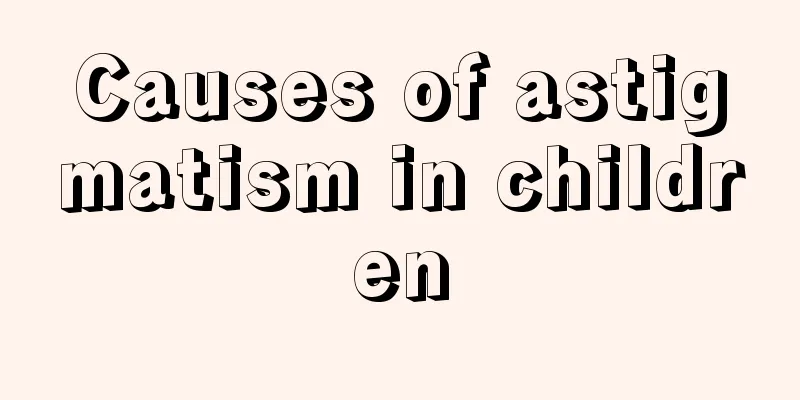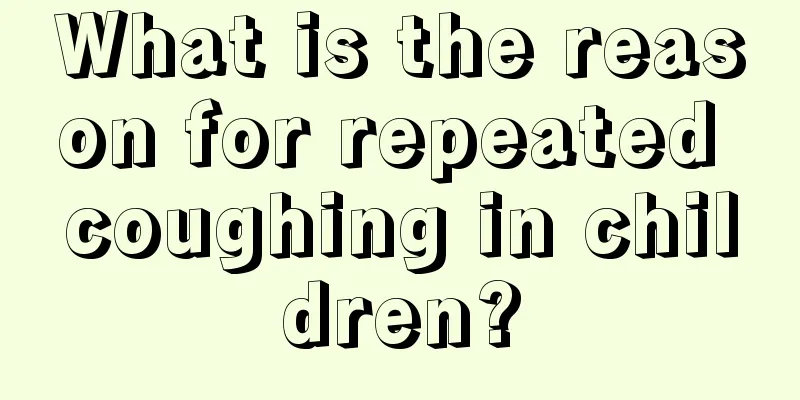What causes white spots in baby's mouth?

|
Once some babies have problems, they need timely treatment to ensure their health and avoid dangerous situations caused by this problem. In particular, once a baby is sick, they need timely treatment to ensure that the baby's condition does not worsen. So what are the white spots in the baby's mouth? Then let me introduce this issue to you. : If a newborn baby has white spots in his mouth, mothers should not worry. It's horse teeth. Shortly after birth, most babies have some yellow-white dots on both sides of the midline of the upper palate and the edge of the gums. These dots look like growing teeth and are commonly known as "milk teeth" or "deciduous teeth". Medically, they are called epithelial beads. Epithelial beads are formed by the accumulation of epithelial cells and are a normal physiological phenomenon, not a disease. "Milk teeth" do not affect the baby's breastfeeding and the development of deciduous teeth. They will gradually fall off within a few months after birth. For some babies due to malnutrition, "milk teeth" cannot fall off in time, but this is not a big deal and does not require medical treatment. 1. A milky white, slightly raised patch appears on the oral mucosa, with no inflammatory reaction around it. It is shaped like a milk block and is painless. After wiping off the patch, a red wound without bleeding can be seen underneath. The patch varies in size and can appear on the tongue, cheeks, palate, or inner lip mucosa. 2. It is common in the mucous membranes of the cheeks, tongue, soft palate and lips. The white patches are not easy to wipe off with cotton swabs or wet gauze; 3. When the infection is mild, it is difficult to detect unless the mouth is carefully examined. There is no obvious pain or the patient only feels painful when eating. In severe cases, the baby will be irritable and restless due to the pain, have a poor appetite and cry, have difficulty breastfeeding, and sometimes have a mild fever; 4. If the damaged mucosa is not treated in time, it can continue to expand and spread to the pharynx, tonsils, gums, etc. In more serious cases, the lesions can spread to the esophagus and bronchi, causing candidal esophagitis or pulmonary candidiasis, resulting in breathing and swallowing difficulties. A few may develop chronic mucocutaneous candidiasis, which can affect lifelong immune function. It may even lead to other bacterial infections and cause sepsis. The above is my opinion on this issue that I would like to introduce to you. If the patient has the above problems, timely treatment is needed to ensure the baby's physical health and avoid dangerous situations caused by the above problems. In particular, the patient should pay attention to avoid the deterioration of the disease. Finally, I wish the baby a speedy recovery. |
<<: How to determine whether a baby is anemic
>>: Dosage and administration of pneumonia vaccine for children
Recommend
Traditional Chinese Medicine Treatment of Otitis Media in Children
Otitis media, especially acute suppurative otitis...
What to do if a child has red bumps on his body
The physical health of children is what parents c...
Ways to enhance your child's immunity
The weather is cold in winter and the temperature...
Can pregnant women drink vitamin C effervescent tablets?
Vitamin C effervescent tablets are actually vitam...
Are children's vision correctors useful?
Children's vision correctors have certain the...
Baby's neck is hot but forehead is not hot
Mothers are very concerned about their baby's...
How long will it take for baby's eyelids to get better?
For new parents, they all hope that their baby wi...
Why does the baby vomit when switching from breast milk to formula?
Mother’s breast milk is very important to the bab...
Introduction to baby fever and cold hands and feet
When a baby has a fever and has cold hands and fe...
How to manage children?
After a child is born, parents not only need to t...
What to do if your two-month-old baby cries before going to bed
The world of babies is very simple. If babies can...
Runny nose followed by cough
In fact, many children experience a runny nose fo...
Causes and treatments for runny nose in newborns
In fact, we often need to be extra careful in car...
A brief introduction to the diet for seven-month-old babies
A baby is a new member of a family and the fruit ...
What should I do if my baby has a fever and convulsions?
Children are the central word of a family. Every ...









